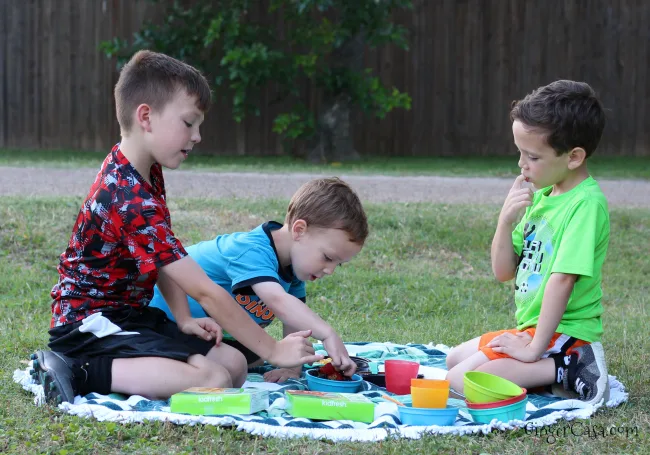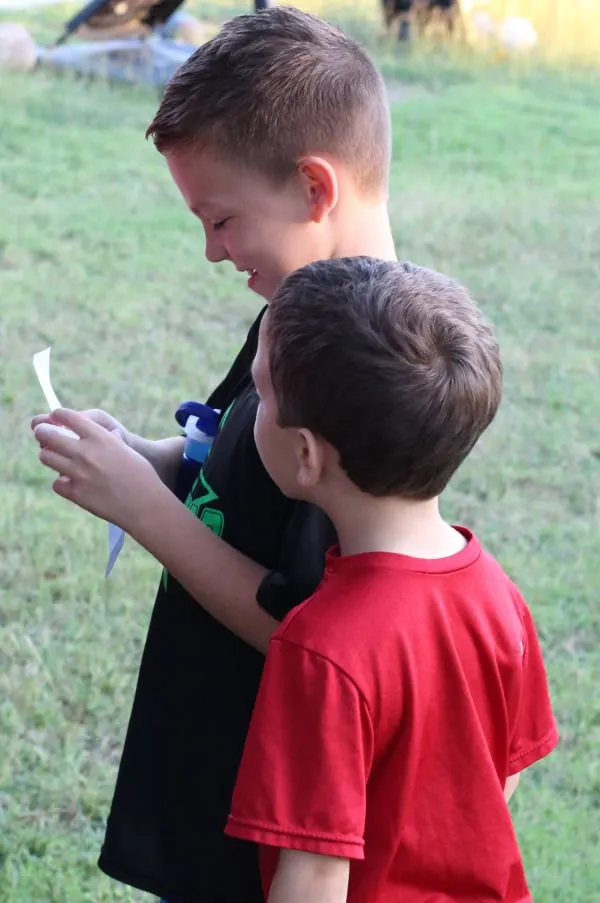I think we all remember loving to play outside as kids. In today's digital age, children spend less time exploring outdoors than previous generations. According to Oxford Home Schooling, British children play for about 1.6 hours daily, an hour less (63%) than their previous generations. However, the children spend 56% more time on technology than playing outdoors.

Additionally, the Pew Research Center reveals that only 5% of US teens don’t use smartphones. Nearly 4 in 10 teen smartphone users agree they allocate too much time to their devices. Similarly, over a quarter claim the same about their social media use. These startling facts highlight a growing concern in our society.
In an era dominated by screens, encouraging our kids to step outside is more vital than ever. Spending time in nature offers incredible benefits for their physical health and mental well-being.
So what are some practical ways to help your children build a lasting connection with the outdoors, regardless of your family's schedule or living situation?
The Dangers of Digital Technology
Children today face unprecedented competition for their attention. Smartphones and TV screens have become companions for many children in the United States. Children use smartphones in class, unless there is a school rule against it, while studying and when they should be sleeping.
A 2023 Common Sense Media report reveals that the average child receives a median of 237 device notifications daily. Teens also check their phones an average of at least 100 times daily. This creates a relentless stream of interruptions and digital demands. At least 66% of teens say they have trouble putting away their smartphones.
This constant digital engagement is changing how children experience childhood. Dr Jonathan Haidt, social psychologist and author of “The Anxious Generation,” advises parents on administering smartphones and social media to their teens. He suggests that kids should have minimal to zero access to either until they turn 16.
Haidt bases his narrative on the rising mental health troubles among American tweens and teens. Talking to CNN, Haidt states that steadily rising self-harm and suicide rates will soon push us over the tipping point. The time children remain glued to screens directly reduces their outdoor exploration and physical activity opportunities.
Many parents now worry about how this screen dependence affects their children's development and mental health. Some families have even joined social media addiction lawsuits against major social media corporations. These cases claim that the companies designed products to be addictive to young users while downplaying potential harms.
Facebook, Instagram, Snapchat, TikTok, and YouTube are all facing the heat. These cases highlight genuine worries, with some families claiming that excessive use of these platforms causes mental health disorders among children. Creating tech-free time for outdoor discovery is essential for modern parents.

Start Early and Build Nature Habits From Toddlerhood
Children with regular, unplugged outdoor time show better focus, mood regulation, and social skills than peers with unlimited screen access. It boosts the children's mental and physical well-being, stimulating their innate curiosity and helping them cultivate independence.
Being outside encourages kids to think creatively about how to play and explore. Regular outdoor adventures can increase confidence and improve resilience to challenges. Begin cultivating outdoor appreciation early in young children. Simple sensory experiences like feeling different textures (smooth stones, rough bark) or listening to natural sounds build positive associations with outdoor spaces.
Use nature as a teaching tool. The natural terrain provides countless learning avenues. Simple activities like distinguishing flowers and plants, identifying birds, or tracking weather patterns build academic skills within a meaningful context.
Make Outdoor Time a Family Priority
Children learn by example. When you demonstrate enthusiasm for outdoor activities, your kids are prone to developing the same interests. Establish a weekly nature ritual, perhaps Saturday morning hikes or after-dinner neighborhood walks. The key is consistency, not duration. Even 20-minute daily nature breaks can improve family well-being and strengthen parent-child bonds.
Another way you can maintain consistency is by creating an outdoor-friendly home environment. You don't need a large backyard to connect with nature. Even apartment dwellers can create mini-gardens on balconies or windowsills. Child-sized gardening tools and designated digging areas make outdoor spaces more inviting for young explorers.
Consider creating simple outdoor stations with materials like magnifying glasses, butterfly nets, or weather journals to encourage exploration. These tools invite children to engage more deeply with natural spaces. You can also visit local parks, nature centers, and community gardens.
These spaces offer accessible outdoor experiences for families without private outdoor spaces. Many of these venues offer free programming specifically designed for children.

People Also Ask
Q1. What are some fun outdoor activities for young children?
For children, focus on sensory exploration. Try nature scavenger hunts where they look for specific leaves, rocks, or flowers. Blowing bubbles outside is always a hit. You can also create a simple obstacle course using pillows or toys in your backyard. You want to make it playful and engaging.
Q2. How can I balance screen time limits without causing resistance?
Frame tech boundaries positively: Offer outdoor adventures as “unplugged missions” (e.g., geocaching) and let kids earn screen minutes through nature time. Use apps like Screen Time to automate limits, reducing friction. Focus on replacing screens with engaging alternatives, not just taking devices away.
Q3. How can I encourage my teenager to spend more time outdoors?
Involve your teen in planning outdoor activities that align with their interests, like hiking, biking, or even photography in nature. Suggest meeting friends at a park instead of indoors, to play sports like pickleball. You could also explore volunteering opportunities related to environmental conservation. You can also highlight the stress-relieving benefits of being outdoors.
Cultivating a love for the outdoors in your children is a valuable gift that will benefit them for years to come. Moreover, it doesn't require dramatic lifestyle changes. Start with small, consistent nature experiences that fit your family's routine and location. These steps will set the stage for a healthier future.
You lead by example and show your child the value of nature. The benefits, improved physical health, better emotional regulation, enhanced creativity, and stronger family bonds, far outweigh the efforts. So step outside and rediscover the joy of the natural world together!
